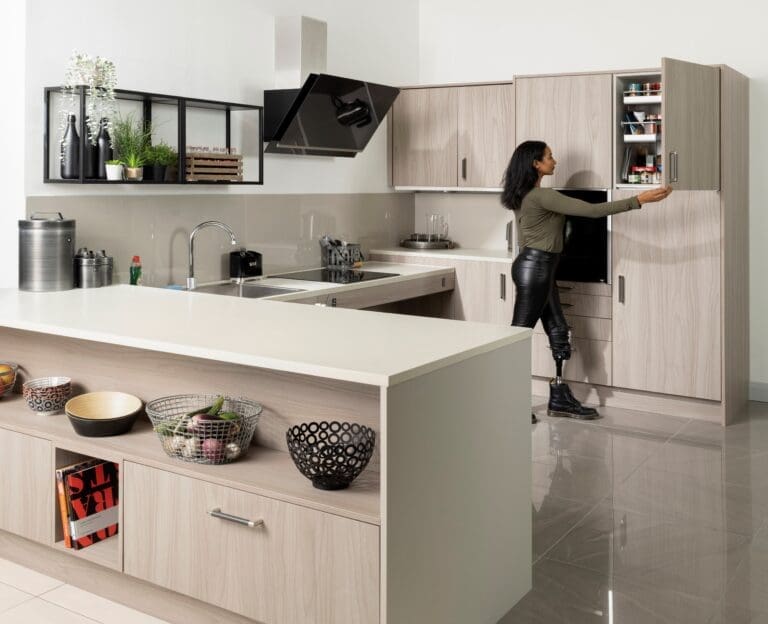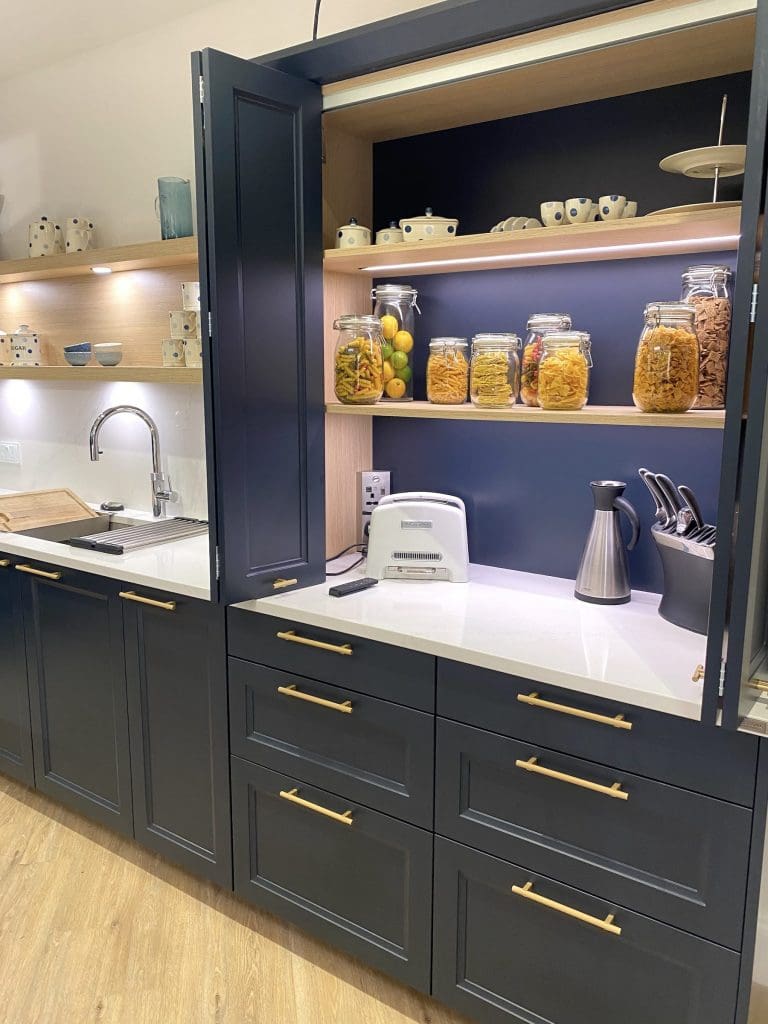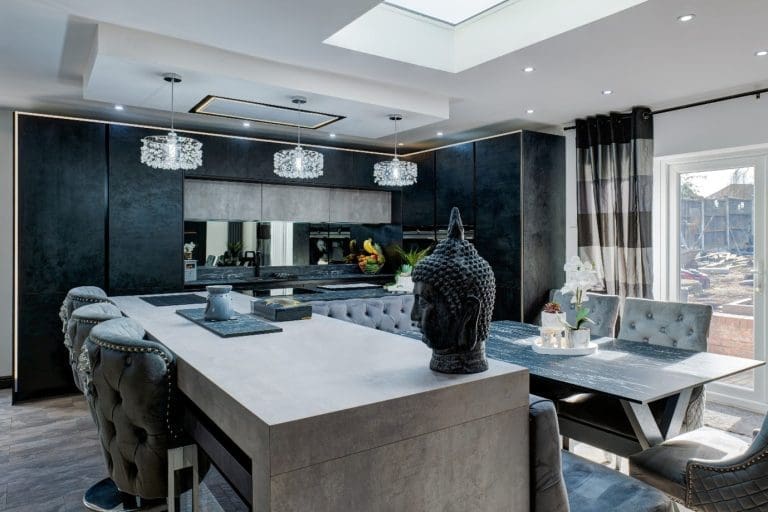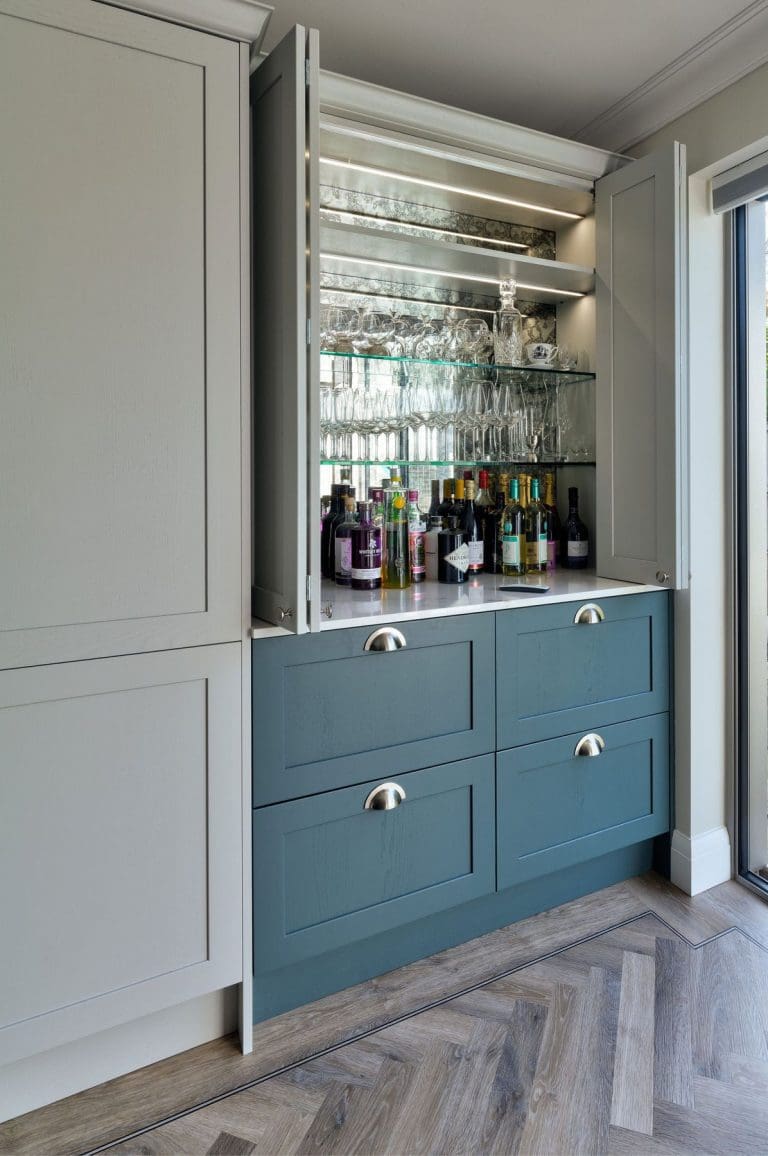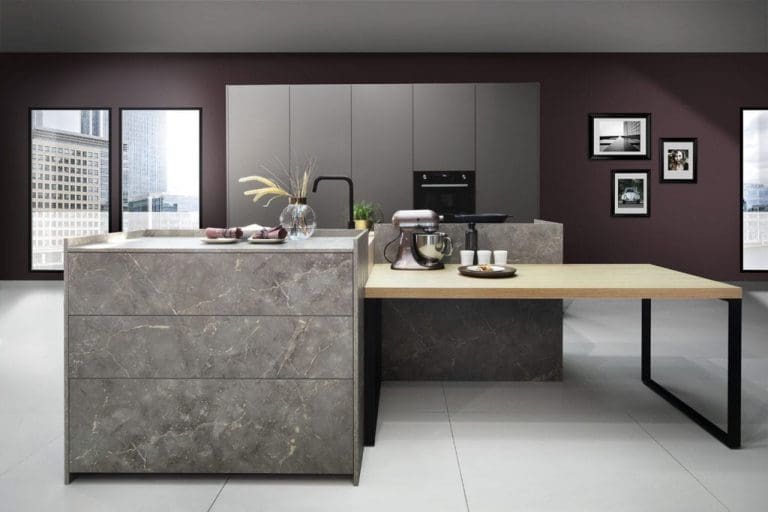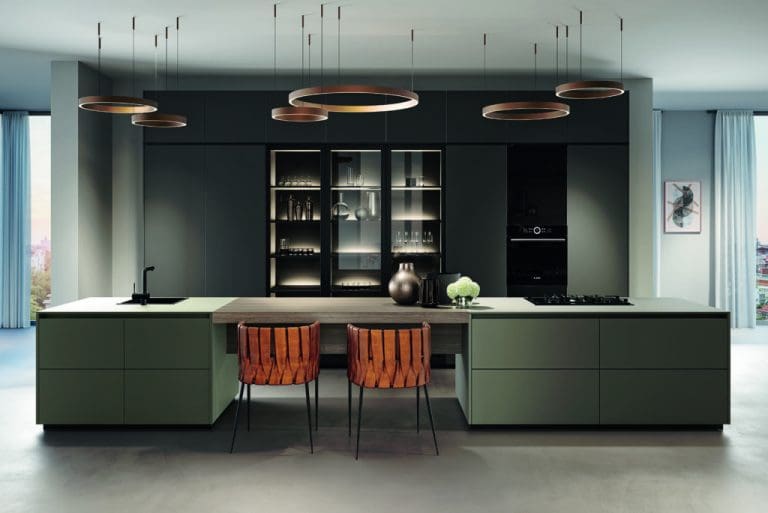How Much Does a Fitted Kitchen Cost?
One of the first questions most people ask before walking into a kitchen showroom is:
“How much is this going to cost me?”
It’s a completely fair question—but also one of the trickiest to answer. That’s because there’s no single price tag for a fitted kitchen. Like buying a car, the final cost depends on a wide range of choices, specifications, finishes, and features.
But let’s break it down and help you start planning with confidence.
Think of It Like Buying a Car
Imagine you’re buying an Audi Q3 – black edition. The base price might be around £38,000. But start adding extras—leather upholstery, sat nav, upgraded wheels, panoramic roof—and suddenly you’re pushing £45,000+.
Why do people spend more? Because those extras bring comfort, style, convenience, and better resale value. Kitchens work the same way.

Kitchens Are No Different
Your kitchen is one of the most-used spaces in your home. You’ll cook, eat, entertain, work, relax, and spend time with family there—every single day. And unlike a car you might change every few years, most people keep a kitchen for a decade or more.
So, getting it right the first-time matters. From worktop materials to clever storage, layout to lighting, your kitchen should be tailored to how you live—not just how much you’re willing to spend. That’s where the real value lies.
Why the Cheapest Price Isn’t Always Best
It’s easy to focus on the bottom line and chase the cheapest quote. But beware—low prices often mean compromises in materials, layout, appliance quality, aftercare, and longevity.
And remember, you can’t “trade in” a poorly planned kitchen. A cheap kitchen might cost you more in frustration, repairs, or even replacement down the line.
So, Where Do You Start?
Here’s how to take control of your kitchen budget and expectations:
1. Assess Your Space & Feasibility
Do you need structural changes? Will you require planning permission? Is your vision realistic within the space? Make sure you’re clear on what’s possible before you fall in love with a Pinterest image.
2. Set a Realistic Budget
Everyone has a budget—even if they don’t realise it. It’s really a question of what feels like value for money. Here’s a rough guide to how your budget might be allocated:
- Professional fees (designer/architect) – 5%
- Building/structural work – 40–50%
- Kitchen furniture (units) – 15%
- Appliances – 5–10%
- Worktops – 5%
- Finishes (flooring, lighting, paint) – 10%
- Contingency – 10%
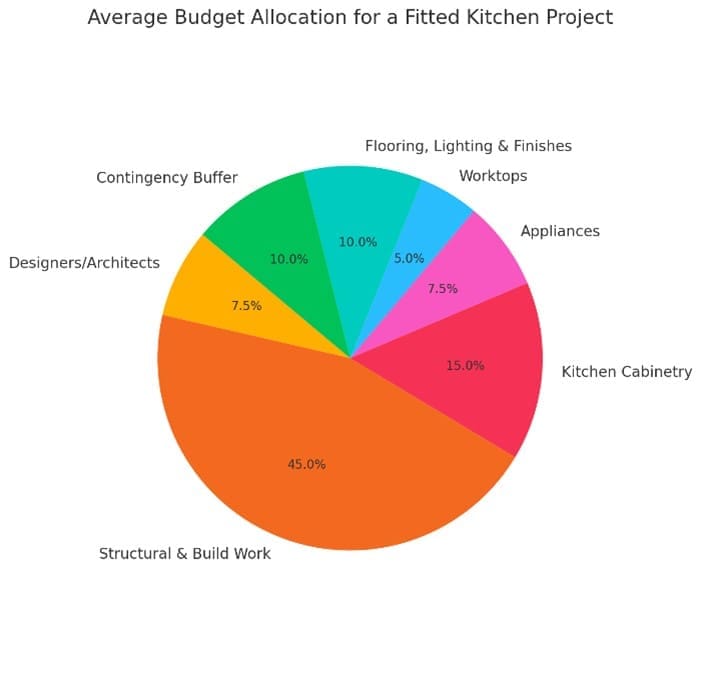
3. Understand VAT Rules
Depending on your project, you might be eligible for VAT relief:
- New builds – Zero-rated VAT
- Conversions (e.g., barns) – 5% VAT
- Unoccupied properties (2+ years) – 5% VAT
- Accessible/adapted kitchens – Certain items may qualify for 0% VAT
A professional kitchen designer can help you check your eligibility early on.
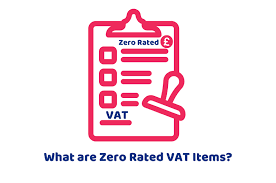
4. Be Honest About Your Budget
One of the most important things we encourage is budget transparency.
Many clients say, “I don’t have a budget—just design something and I’ll see where we land,” or throw out a low or high figure to test the water. The truth? Neither approach is helpful.
Let’s return to the car analogy: you wouldn’t walk into a Porsche showroom if your budget is more in line with a Kia. Aspirational? Maybe. But it wastes time—for you and the designer. And time is money.
Not giving a budget means the designer is flying blind. With hundreds of options on finishes, layouts, and appliances, how can they create a realistic, targeted design?
Lowballing is also common — clients fear if they say £20k, a designer will magically hit £25k. But a budget is a guide, not a spend target. Be clear if it’s fixed or flexible, and whether you want to keep under it or spend wisely within it.
At the other end of the scale, we’ve had clients give a high budget, hoping the final quote will come in dramatically lower. This rarely works, and again, reflects a very British discomfort with discussing money.
Ultimately, it all comes down to perceived value. Some people will happily invest in a built-in steam oven or boiling water tap. Others see no value in those features. And that’s completely fine—as long as your designer is made aware of what matters to you.
5. Explore Different Suppliers
There’s a huge variety of kitchen suppliers out there—from big-box retailers to specialist studios. Each offers different levels of service, design experience, quality, and aftercare. Don’t just compare prices—compare the full package.
Final Thoughts
The real question isn’t “How much does a fitted kitchen cost?”—it’s “What kind of kitchen do you want to live with for the next 10+ years?”
With honest conversations, realistic planning, and professional advice, your dream kitchen isn’t just possible—it’s within reach.
For further information and to book an appointment please contact us
Email – [email protected]
Tel: 0121 572 1540
